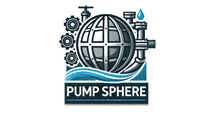How to Choose the Right Submersible Pump for Drainage, Construction, and Flood Control
How to Choose the Right Submersible Pump for Drainage, Construction, and Flood Control
When water needs to be moved quickly and reliably, a submersible pump is often the best tool for the job. Whether you’re tackling flood water, dewatering a construction site, or managing facilities, the right specification prevents downtime and protects equipment.
At PumpSphere.co.uk, we help customers across the UK identify the most effective pump for their application; balancing flow rate, durability, and efficiency. This guide walks through the key points to consider when choosing the right submersible pump.
1. Define the Application
Start by clarifying what you’re pumping and how often you’ll need to use the pump.
Clean or lightly contaminated water: ideal for basements, cellars, pools, and domestic drainage.
Dirty water with fine debris: choose a contractor or dirty-water submersible pump for dewatering on sites.
Wastewater or slurry: use a heavy-duty vortex or grinder submersible designed to handle solids.
The dirtier or more abrasive the liquid, the stronger and more wear-resistant the impeller and casing need to be.
2. Flow Rate and Head Height
The flow rate (litres per minute or cubic metres per hour) tells you how much water the pump can move.
The head height (metres) shows how high the pump can lift the water.
-
For rapid drainage, look for higher flow capacities (e.g., 500–1,000 L/min).
-
Head height is especially important when pumping water uphill or through long discharge hoses.
If in doubt, slightly overspecify; running a pump constantly at full load shortens its lifespan.
3. Construction and Materials
Submersible pumps operate in harsh conditions, so the materials matter:
-
Stainless steel: corrosion resistance for clean or mildly contaminated water.
-
Cast iron: robust choice for construction and abrasive environments.
-
Semi-vortex impellers: maintain efficiency when pumping dirty water.
4. Power and Supply
Match the pump to your available power:
-
230 V single-phase: standard for homes and light commercial use.
-
400 V three-phase: ideal for continuous or industrial operation.
Always check your cable length and voltage drop; an undersized cable can reduce pump performance.
5. Solids Handling Capability
If the water contains sand, silt, or debris, the impeller design is crucial:
-
Semi-open impellers handle dirty water well.
-
Vortex impellers are best for wastewater or sludge.
-
Grinder pumps cut solids before discharge, preventing blockages.
Always confirm the maximum solids size (e.g., 25 mm, 40 mm, 50 mm) to ensure it fits your needs.
6. Safety and Maintenance
Look for features that protect your investment:
-
Thermal overload protection: stops the motor from overheating.
-
Double mechanical seals: prevent water ingress during heavy use.
-
Automatic float switches: allow safe, unattended operation.
Regularly clean strainers, check seals, and avoid dry running to extend lifespan.
7. When to Choose a Trash Pump Instead
While submersible pumps work best when fully submerged or space is limited, trash pumps are often better for high-volume, sediment-heavy water that needs fast movement.
Trash pumps sit on the surface, making them easier to service and ideal for flood control or construction dewatering where access is open.
8. Quick Checklist
-
Confirm the water type and level of solids.
-
Calculate required flow rate and head height.
-
Know whether operation is continuous or intermittent.
-
Check power supply, cable length, and protection features.
Need Help Choosing?
If you’re unsure which submersible pump is right for your job, our team can help.
We supply and support reliable pumps from trusted UK and European brands, with honest advice for every application.
📞 Call us: 0330 122 1219
💻 Visit: www.PumpSphere.co.uk
About PumpSphere
PumpSphere.co.uk connects UK customers with high-quality pumps, water systems, and treatment solutions; helping you source the right equipment with confidence.


